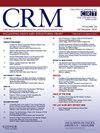桡动脉远端入路使用止血垫进行人工压迫止血
IF 1.6
Q3 CARDIAC & CARDIOVASCULAR SYSTEMS
引用次数: 0
摘要
背景桡骨远端入路的止血方法尚未标准化,尽管该入路因其优点而越来越受欢迎。在这项研究中,我们研究了经桡骨远端入路冠状动脉造影后使用海藻酸钙垫进行手动压迫止血的可行性。方法回顾性收集150例患者(平均年龄74.9±8.0岁;男性,75%),于2021年4月至2022年12月通过以4fr为主的桡动脉远端行冠状动脉造影,并按以下方法止血。脱鞘后,使用含海藻酸钙的止血垫手动按压10分钟止血。当确认止血后,将一个小的圆木形纱布置于垫上,并用自粘弹性绷带固定2小时。所有手术均由4名刚开始桡骨远端入路的患者完成。结果平均压迫时间为12.4±4.8 min,所有患者均成功止血,2 h后可松开弹力绷带,仅1例患者次日早晨出现渗液。无重大并发症,其中1例出现10cm血肿。与前15例患者相比,后续患者的压迫时间明显缩短(14.5±6.7 vs 11.1±2.1 min, p <;0.01)。结论海藻酸钙垫手压止血桡动脉远端入路可行,操作简单。本文章由计算机程序翻译,如有差异,请以英文原文为准。

Manual compression hemostasis using a hemostatic pad for the distal radial artery approach
Background
The method of hemostasis for the distal radial approach has not been standardized, although this approach has become increasingly popular due to its advantages. In this study, we investigated the feasibility of manual compression hemostasis using a calcium alginate pad after coronary angiography via the distal radial approach.
Methods
We retrospectively collected 150 consecutive patients (mean age, 74.9 ± 8.0 years; male, 75 %) who underwent coronary angiography via the distal radial artery with a predominantly 4 Fr sheath from April 2021 to December 2022 and were hemostatic according to the following methods. After sheath removal, hemostasis was achieved by manual compression for 10 min using a hemostatic pad containing calcium alginate. When hemostasis was confirmed, a small log-shaped gauze was placed over the pad and fixed using a self-adhesive elastic bandage for 2 h. All procedures were performed by four fellows just beginning the distal radial approach.
Results
The mean compression time was 12.4 ± 4.8 min, and hemostasis was successfully achieved in all patients, allowing the release of the elastic bandage after 2 h, with only one patient oozing the next morning. There were no major complications, while one patient had a >10 cm hematoma. Compared to that of the first 15 patients, for each fellow, the compression time of the subsequent patients was significantly shorter (14.5 ± 6.7 vs 11.1 ± 2.1 min, p < 0.01).
Conclusions
Manual compression hemostasis using calcium alginate pads for the distal radial artery approach appears feasible with a simple learning.
求助全文
通过发布文献求助,成功后即可免费获取论文全文。
去求助
来源期刊

Cardiovascular Revascularization Medicine
CARDIAC & CARDIOVASCULAR SYSTEMS-
CiteScore
3.30
自引率
5.90%
发文量
687
审稿时长
36 days
期刊介绍:
Cardiovascular Revascularization Medicine (CRM) is an international and multidisciplinary journal that publishes original laboratory and clinical investigations related to revascularization therapies in cardiovascular medicine. Cardiovascular Revascularization Medicine publishes articles related to preclinical work and molecular interventions, including angiogenesis, cell therapy, pharmacological interventions, restenosis management, and prevention, including experiments conducted in human subjects, in laboratory animals, and in vitro. Specific areas of interest include percutaneous angioplasty in coronary and peripheral arteries, intervention in structural heart disease, cardiovascular surgery, etc.
 求助内容:
求助内容: 应助结果提醒方式:
应助结果提醒方式:


